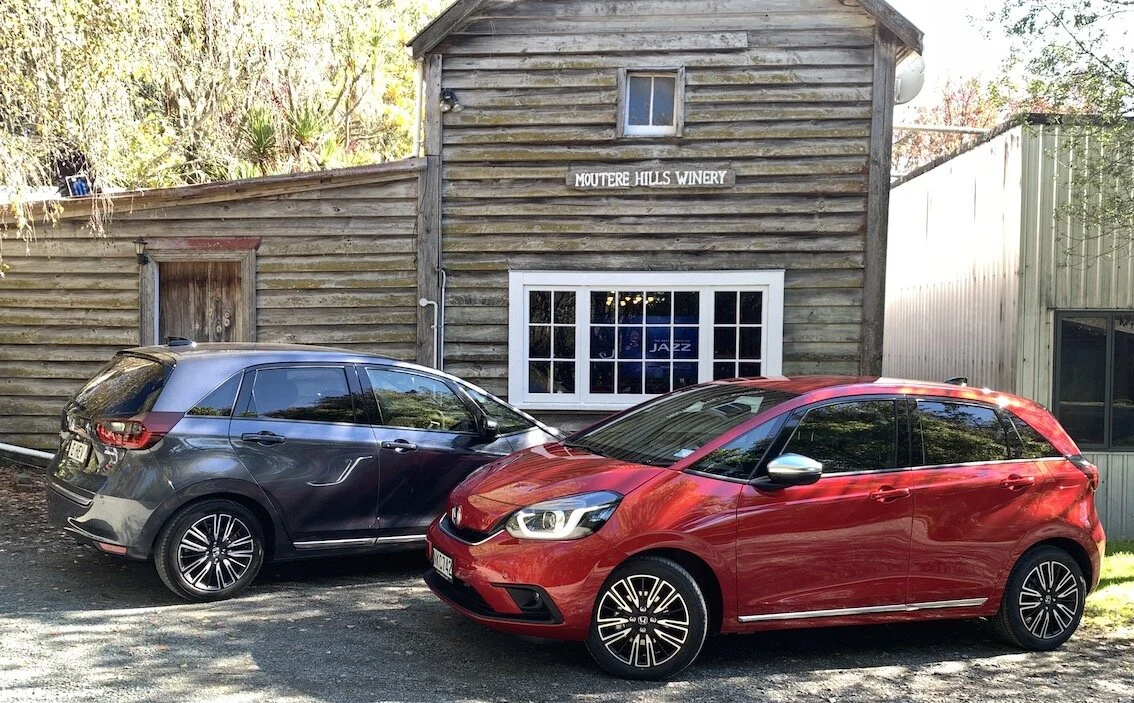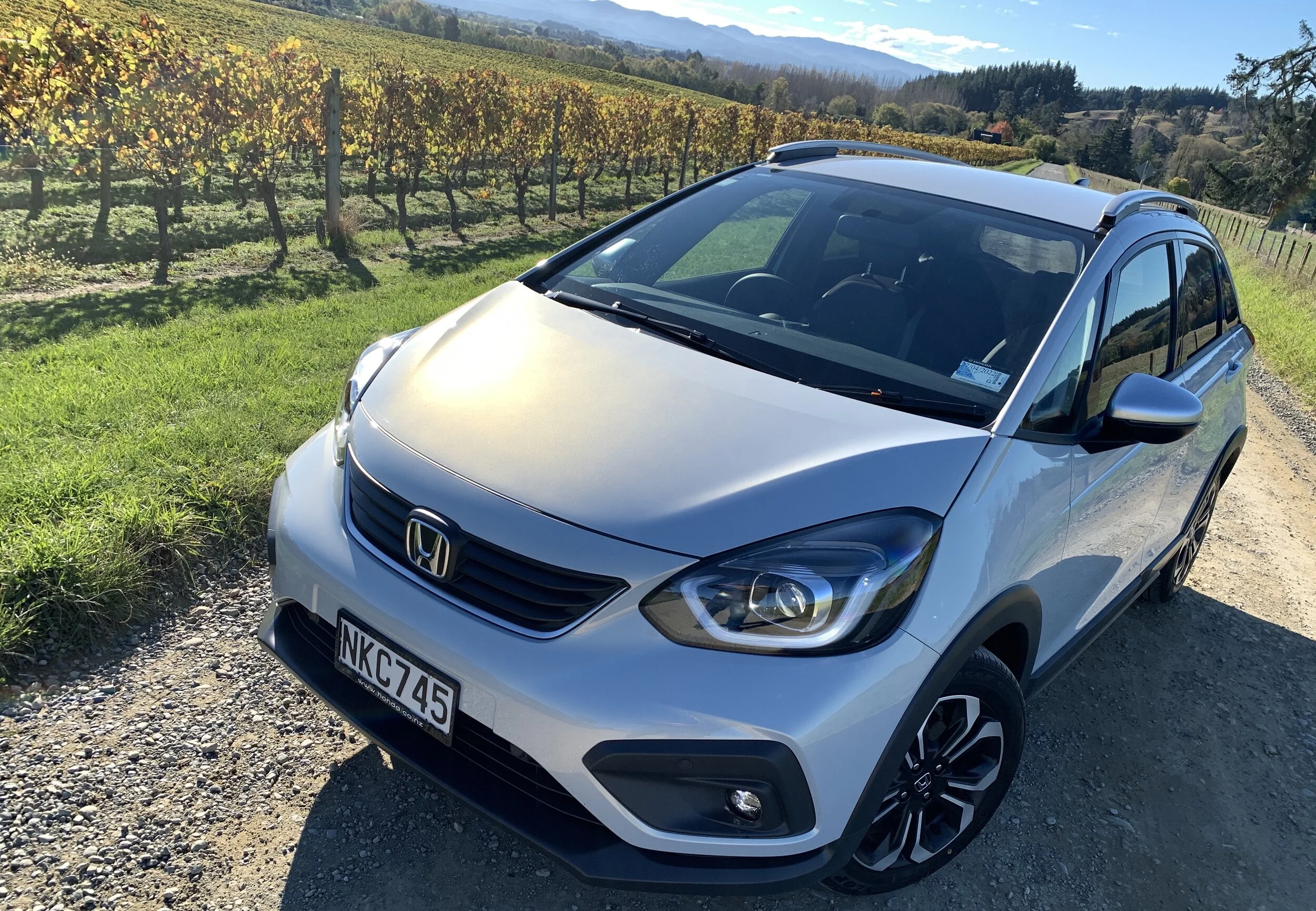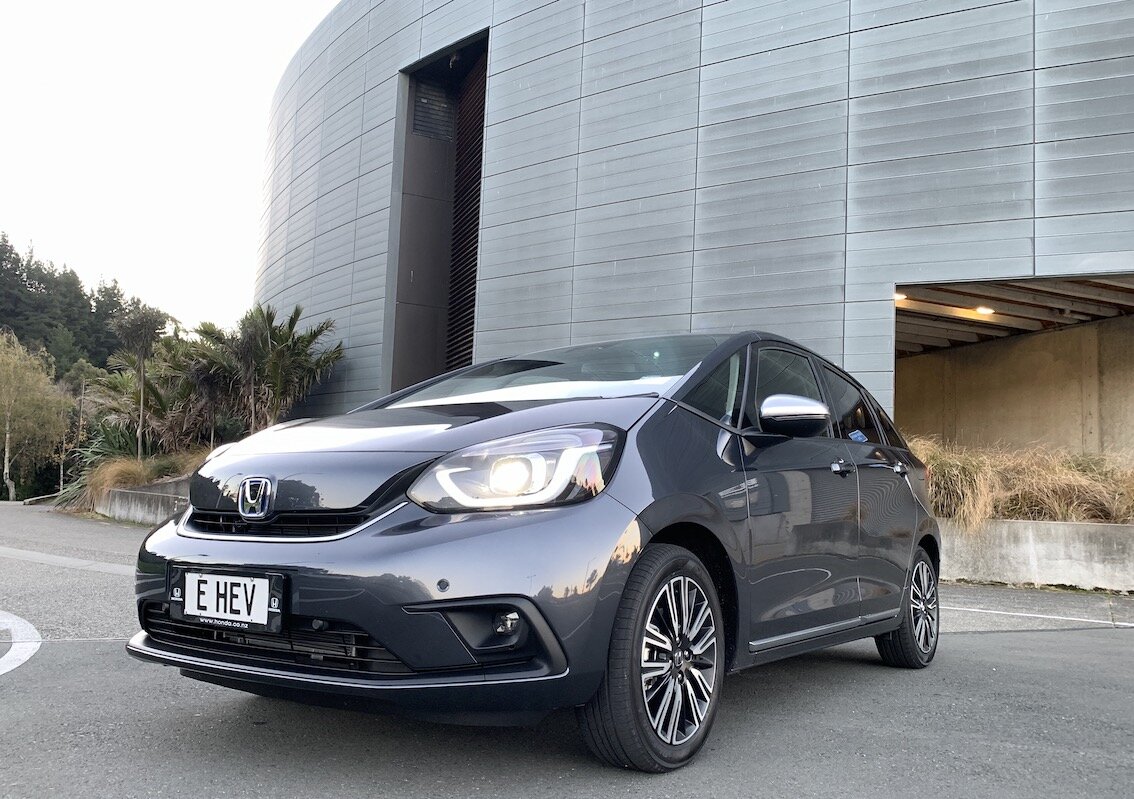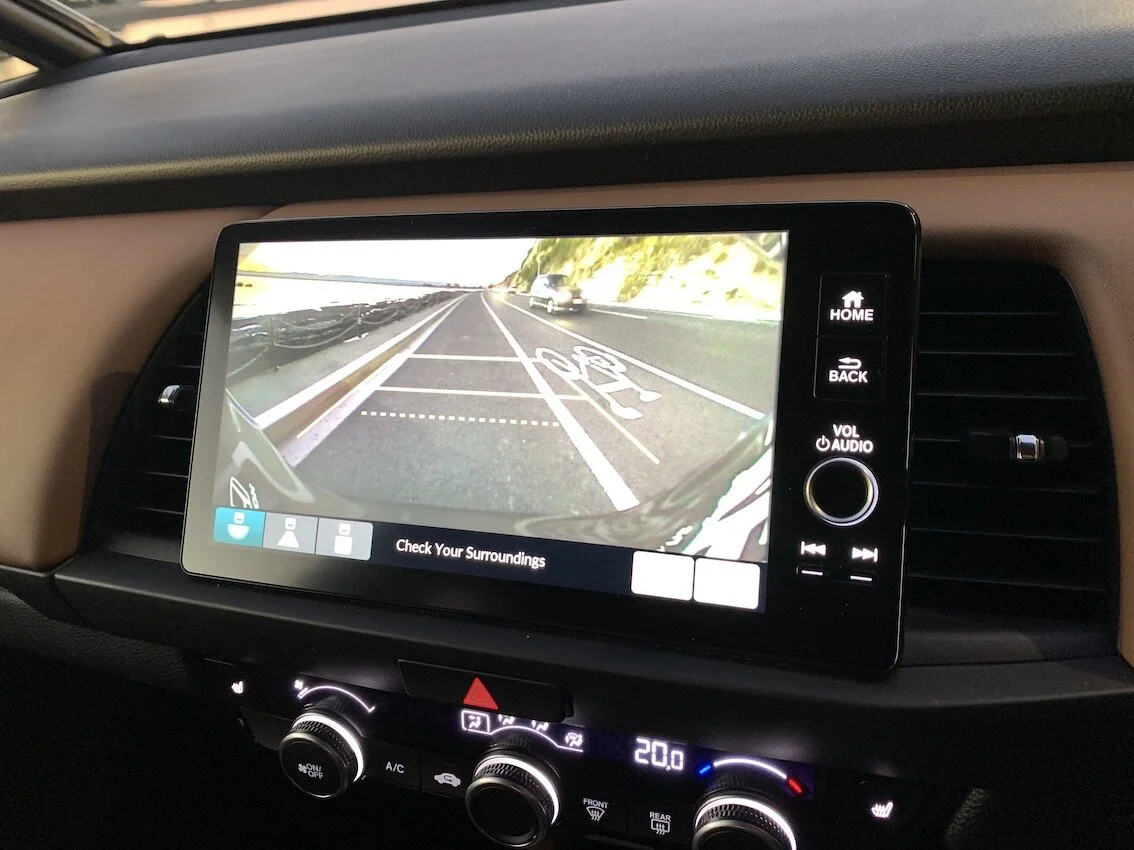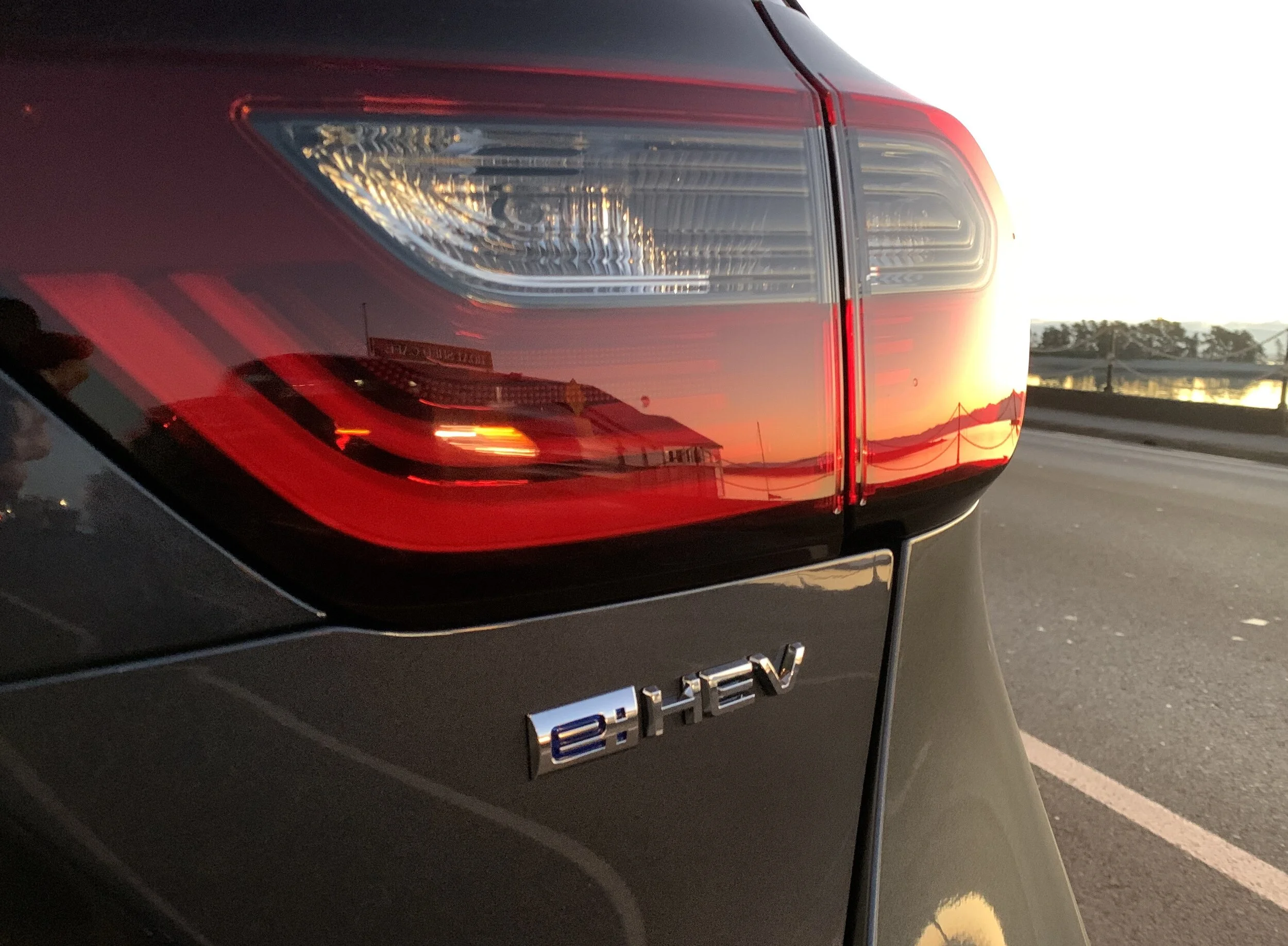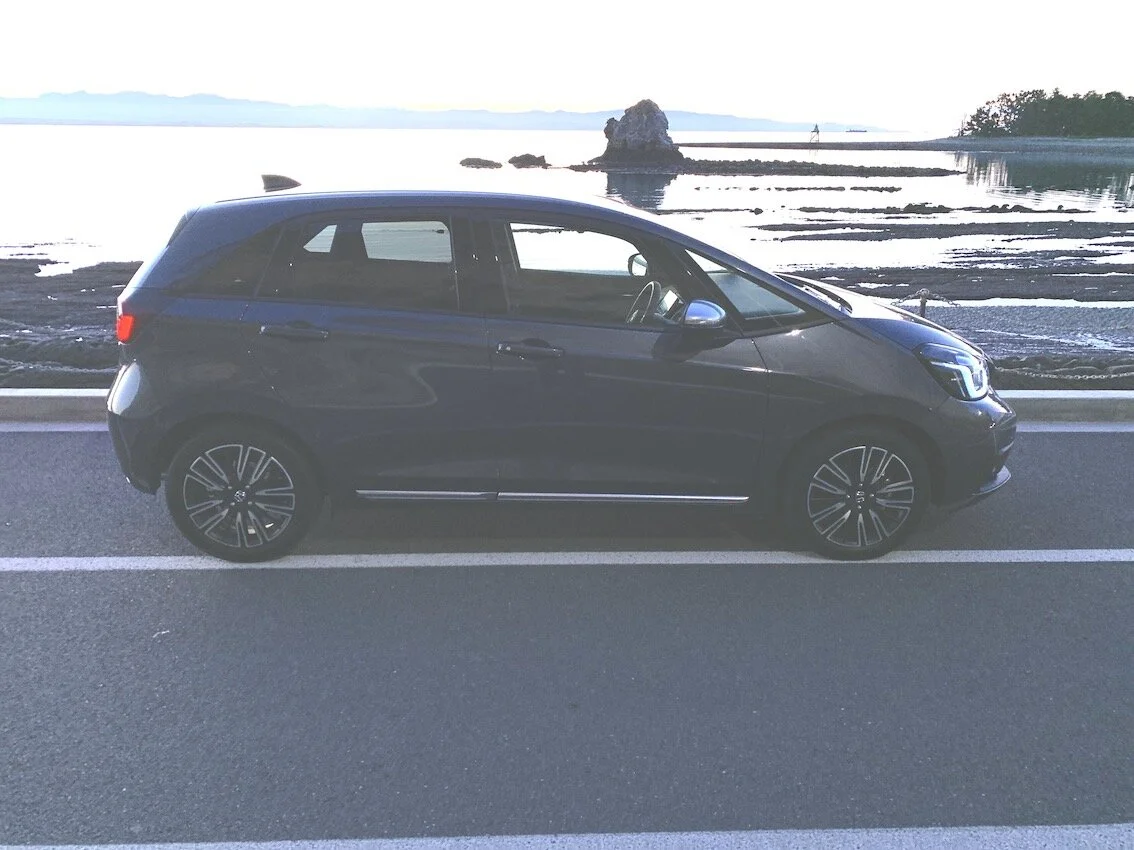Honda Jazz: Nothing wrong with a new play list
/The entry hatch keeps to tradition, new versions are set to raise the sales tempo.
JAZZ design this time expresses a new design philosophy, Yoo No Bi - a recognition of the beauty that exists in everyday items.
CONVENTIONAL with a touch of sporty; quasi off-road themed; step-into-tomorrow electric-prioritised: The choice is yours.
After three generations that had full focus on the first, Honda has finally awoken to how much the world is changing and attuned one of its best sellers, here and internationally, to better meet today’s tastes.
Of the three editions in the just-landed fourth generation of the Jazz, realistically just the $28,000 entry Life sticks to a song sheet familiar to the fanbase.
The others are new material. As much as the $30,000 Crosstar that has the same powertrain as the entry choice and the $35,000 Luxe - also a 1.5-litre but debuting a new Honda e-technology hybrid with potential to lend optimal economy of just 2.8 litres per 100km – are still primarily meeting the same city-centric funabout requirements that so obviously flavour the Life, they nonetheless drive to such a different beat they are fully expected to attract customers beyond the established pool.
Honda New Zealand is excited by the potential; as much as they treasure the car’s established clientele, there’s open acknowledge that having a primarily 60-plus buyer base isn’t necessarily a best strength. They also need younger buyers. Families as well as empty-nesters. The only vexation about which of the new additions will turn out to be the top seller. As much as the soft-road zone and the petrol-electric categories that they respectively occupy are fresh territory for Jazz, they are also established high-opportunity zones.
Crosstar takes this city slicker on a new direction.
With three distinct versions, you’ll naturally be driven to imagine they deliver with three distinct character traits. That’s true. To a point.
Obviously it’s the same car at heart. All have a common platform and continue, despite having lost a bit of the 'monobox' styling of its three predecessors – the most obvious change being despite a 10mm reduction in roof height – to offer a cabin large and spacious enough to allow Honda to demonstrate why it’s a renowned master of useful interior space and flexibility. Cabin design, layout and fundamental provision … all that is identical, too.
Yet it’s fair to say that, in driving on roads in and around Nelson, each one spoke differently.
Those who prefer original flavour will be content with the Life. It’s Jazz 101; peppy and, for ride and handling, competent without necessarily being outstanding in any one area.
Refinement on the move is pretty good, with decent insulation from road and wind noise for the class. The engine has more obvious oomph than the preceding car’s and, though you'll see the revs flare up a bit when you encounter an incline, it works pretty well with the constantly variable – aka gearless automatic - that is now the sole transmission choice.
The Crosstar delivers much the same, just from a slightly loftier viewpoint. Plus, of course, in dressing as an urban explorer it’s become more visually extrovert. Honda has altered the front grille and air intake arrangement, slapped black plastic cladding around the lower proportions, plonked a set of roof rails atop an upper body section.
Grape … sorry, … ‘great’ expectations are help for the Crosstar
The air of enhanced toughness is entirely for show and giggly fun; I took it for a quick dance on gravel and it was fine, but go beyond that kind of terrain at your peril.
The same sense of energy from the drivetrain carries across from the Life, but in adopting a taller tyre, an additional 28mms’ ride height and a suspension retune, it trades away some of the base car’s dynamic delicacy. It’s not tripping over its toes, but you can expect a touch more body movement. On the other hand, it does seem to be less affected by surface imperfections. So, there’s give and take going on here.
As for the Luxe? With this one you can say it’s a whole new plot; one with plenty of promise. Basically a Life with premium touches – the only one with leather, rather than cloth seats, as a factory fitment, is notable - and also delivering with additional driver assists, the variant’s big draw in nonetheless the e:HEV drivetrain.
Honda produced the previous line with a hybrid, but not for this market, and driving it now makes you wish they’d had it here a lot sooner. In design and delivery, this petrol-electric drivetrain a masterpiece that not only redefines the car but also reaffirms that innovative engineering – very much Honda’s mojo back in the day when its market share here was more than double the current holding – is not a past practice.
Insomuch that Honda is also obviously now starting to toll out fully electric cars (alongside, but likely to overtake, the still quasi-experimental hydrogen fleet), it also has put great store in electric-assisted petrols. This e:HEV dual motor setup has started locally in the Jazz, but will also feature within the year in the platform-sharing new HR-V, which conceivably might also yet provision as a full battery car here.
cabin layout and design has been brought up to speed.
The packaging is brilliant, but the promise of what it will deliver in everyday driving is the real draw, of course. To this end, it gives more by starting with less on the petrol side; whereas the cars wholly powered by the orthodox four-cylinder 1.5-litre get to tap into 89kW and 145Nm, here the engine is detuned by 17kW and 18Nm. But being in marriage with an electric motor means it’s certainly not weaker; as the latter inputs 80kW and 253Nm on its own strength.
A combined output? There isn’t one. It’s not your usual hybrid. Fully explaining e:HEV is a whitecoat exercise. In layman’s terms, there’s the petrol engine – which, to be fair, isn’t quite like the orthodox one in that it’s an Atkinson-cycle i-VTEC - and two electric motors, one in a propulsion role, the other as a generator.
The engine charges the generator motor which then drives the propulsion motor. In the main. It also charges the battery, a 48-cell 35kWh device placed under the back seat.
On other occasions the engine alone will drive the car directly via a fixed-ratio gearbox, though that isn’t supposed to happen very often. The whole idea, after all, is minimise burning petrol and creating emissions.
Anyway, the real difference with other hybrids is that there’s no moment when both work in tandem. You get petrol, or electric, but never petrol-electric. As per the system that a certain other, very large Japanese brand does it.
e:HEV system prioritises electric in urban driving.
Anyway, Honda claims 2.8 litres per 100km, which is low enough for it to claim the Luxe as the most efficient hybrid on sale here; a title Toyota – but you knew that - has claimed for the Yaris hybrid. Since that tot cites 3.3 litres, it’s beaten on economy if not emissions, where the Honda creates 102 grams per kilometre against the other crowd’s 76g/km. There’s just one grey area, in that the economy that Honda claims is an outcome of a test regime that only occurs in Japan. Whether it will be shown to be as thrifty under WLTP, the worldwide harmonised light vehicle test procedure, that New Zealand has now adopted as the standard measure? No-one had an answer to that on the launch. Honda NZ is satisfied the figure it is promoting is legit.
Anyway, it’s not a count I ever saw on my first drive, which not only included the mainly open road driving the media contingent was exposed to during the launch programme but also another 90 minutes’ urban running in Nelson after my colleagues had departed.
However, from my experience, brand contention about how the drivetrain reverts to being a primarily electric type under 80kmh seems pretty solid. Whereas it was bouncing between one ‘fuel’ source and the other quite often on the pre-planned test route, in my own impromptu urban adventuring when I simply chose interesting roads within the Nelson streetscape it was much more prone to favour electric mode.
On strength of that, I’d say for a car that’s neither a plug-in hybrid or pure electric, it seems to do a pretty good job of being less petrol-reliant in that driving environment than other hybrids I’ve experienced.
Speaking of electric, as much as the Jazz has shaped up markedly in its newest iteration, you’ll surely agree that as much as it could be pleasantly attractive, it’s not as chirpy looking at the kerbside as Honda’s only production electric car, the Honda-e, which though now prevalent as a grey import still seems unlikely to reach here via official channels.
Two motors, one engine … there’s a lot going on under that bonnet
The Jazz styling approach this time basically continues to deliver the usual monobox approach, save that they’ve attached an especially raked nose to one end of the cub. The design elements are intriguing, but the benefit of the new approach is very much evident when you’re at the wheel. The view forward is less minicar than minivan.
Through clever re-engineering to the crash structure, they’ve made the A-pillars really thin which, in turn, leads to a vast front glasshouse with a 90-degree field of vision. It is this aspect that dominates your consideration of the interior. Sitting behind the funky little two-spoke steering wheel and looking out, you feel like you are in a much larger vehicle than you actually are, with an impression sense of airiness as well.
The cabin proper has also undergone a massive redesign. They’re still using a few budget plastics and fixtures, sometimes a bit too obviously – the prompt buttons on the infotainment display are a good example, being almost but not quite haptic. A pity because though the rest of the major touchpoints have much nicer tactility and that big screen itself is very decent in design, ease of use and clarity. That Honda no longer includes sat-nav but instead makes provision for this to enact via your cellphone, wirelessly or by USB if you have Apple CarPlay, USB-only with Android Auto, is fine by me. It’s faster and guarantees you’re always getting latest info.
There’s also a seven-inch TFT instrument cluster for the driver that not only offers decent information in a coherent format – if the standard layout is too much, it can be simplified to showing road speed and very little else – with good destination interaction if you’ve pre-set a sat-nav course.
new infotainment screen also relays the view when reversing.
The car’s comfort has improved – there’s particular pride in the front seat design – and it's still the highly practical Honda interior. As the Jazz retains its centrally mounted fuel tank (still regular-sized in the e;HEV despite that area also being taken up the battery), so the 'Magic Seats' are preserved in the back of the car, there's acres of space within for a vehicle of this road footprint, and the boot is a decent size with all seats in use and almost van-like with the second row folded down.
It’s not a car that redefines anything particularly on a dynamic scale. The weighting of its major controls, particularly the steering, is okay and though it never feels out of its depth, it’s not a high-scorer on the thrill scale. Though, of course, it doesn’t have to be: This car needs to be easy to drive and comfortable, and on these two scores it achieves more than adequately.
The real find here is e:HEV. Using a lot of brake energy recuperation, this system allows the Jazz to run in near-silent, pure electric mode far more than you'd give it credit for, often without any sort of concession to fuel-saving driving tactics. It also interacts more competently with the CVT than the fully petrol drivetrain manages; doing a better job of mimicking gearshifts as if it were a multi-cogged automatic, and delivering less of that hideous, histrionic 'mooing' that is a downside of CVTs. And it’s a far more lively-feeling powerplant, too.
Clearly the powertrain carries a premium, yet potentially that’ll ultimately be resolved as availability increase. It’d be easy to imagine this becoming the sole choice for all Jazz versions. A Crosstar e:HEV already offers overseas.
To me, that model smacks as being the perfect blend. Though many will look at this derivative and ask 'why?', I can sort of see the point. Honda wants Jazz to have a youthful audience and as whacky as it sounds, a lifestyle-oriented raised-suspension version with a small amount of plastic lower-body cladding, roof rails and water-repellant seat fabric is just the way of achieving such a thing. Adding in a future-proofed drivetrain into that fun pack would keep it fresh indefinitely, or at least until Honda here can officially make commitment to a full battery car.
On that side of things, not having Honda-e is simply down to NZ not being a designated recipient market – a factory decision, BTW.
However, it’s only a matter of time before a electric Honda will represent with that blessing; though the local arm will not comment on the electric HR-V displayed at the Shanghai motor show two weeks ago, it would seem a good fit for here.
On top of this, in the days before the national Jazz event, Honda Japan announced a new product strategy that it will have solid state battery cars in production after 2025 and also intends to present nothing more than battery-electric and hydrogen fuel cell vehicles in “major markets” by 2040.
As part of a new electrification roadmap, the company says that 40 percent of its sales in the some world’s largest markets will consist of either electric or fuel cell vehicles by 2030, rising to will 80 percent by 2035. However, the plan only references North America (where it plans for some cars to use the General Motors’ Ultium battery), Japan and China.
Jazz has potential to escape the shadows and resume being a bigger foil to sector giants such as Toyota Yaris.

